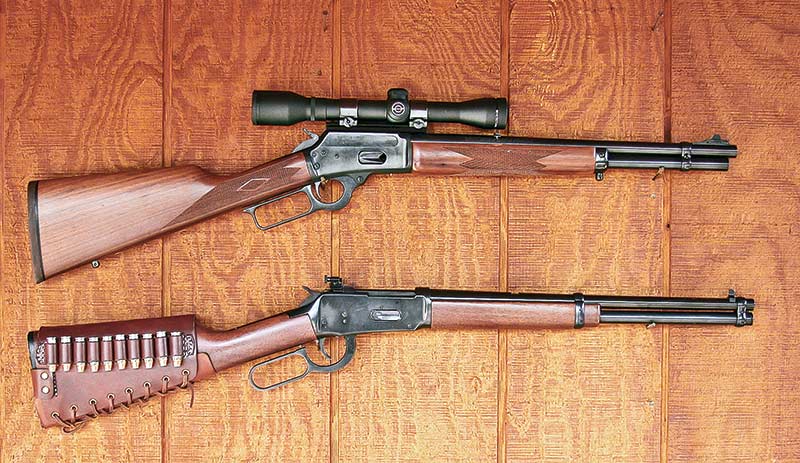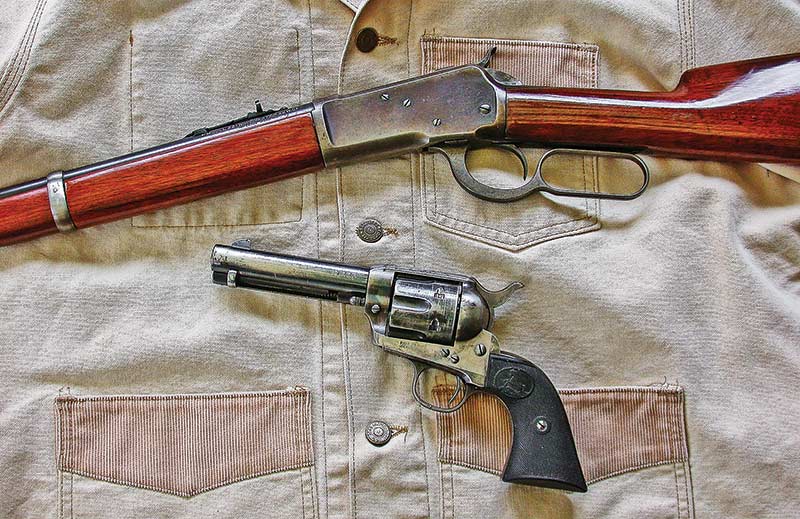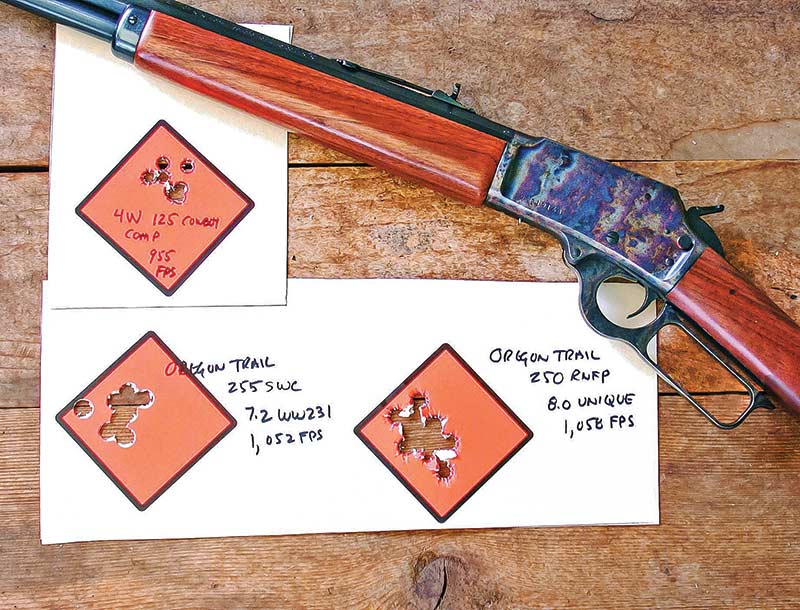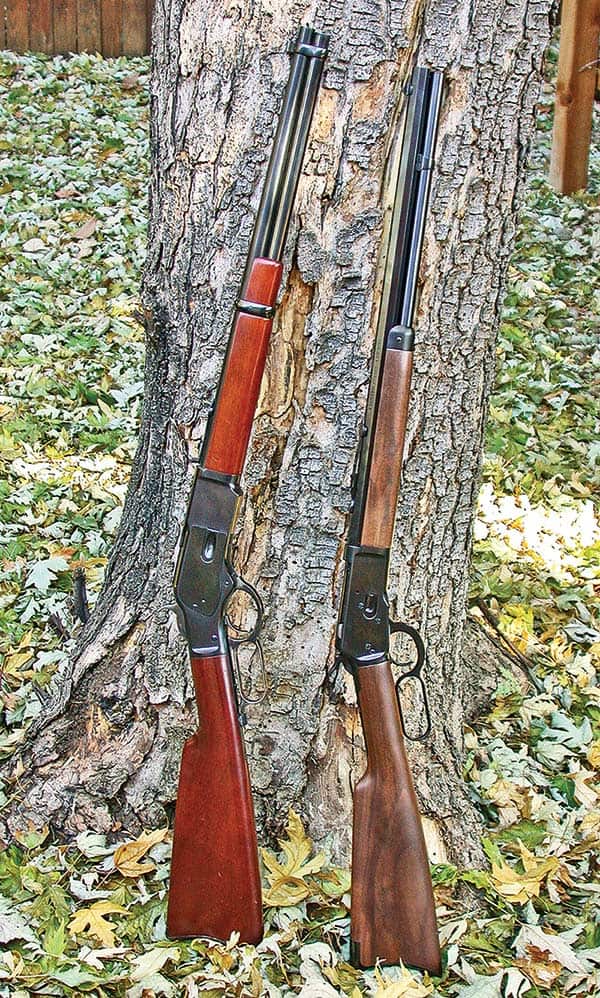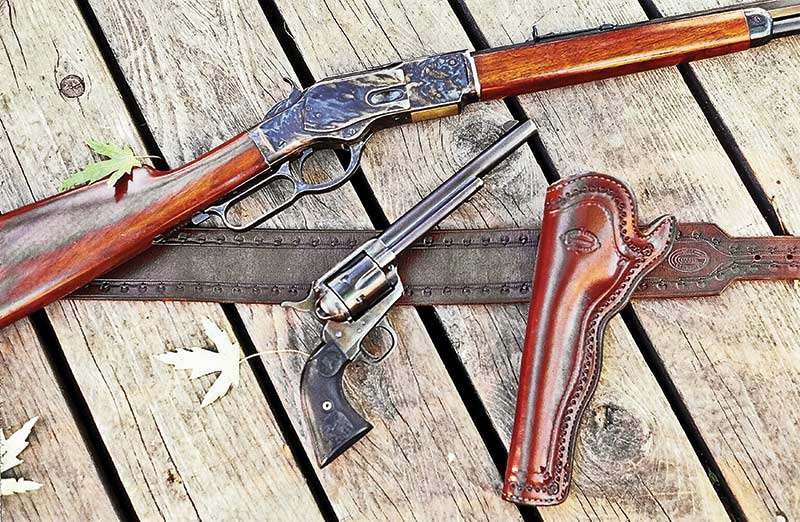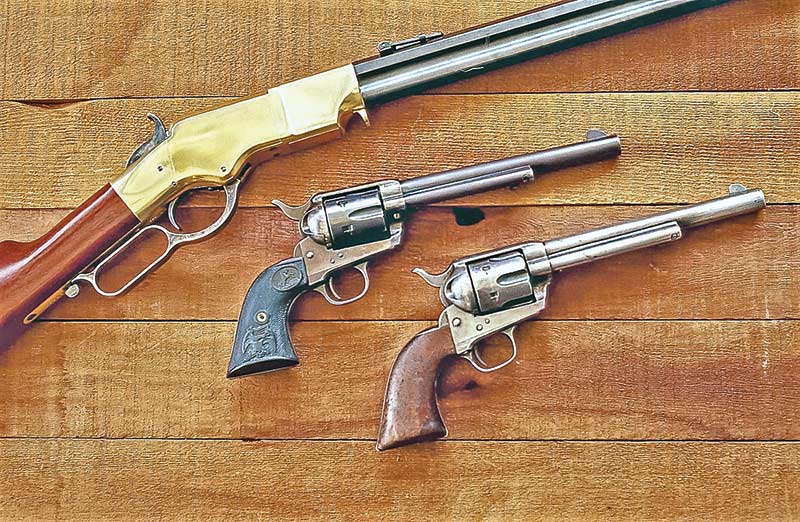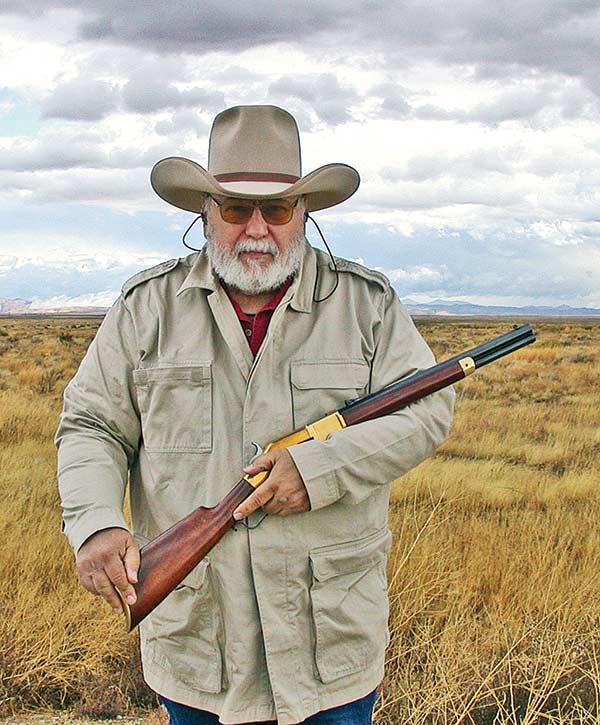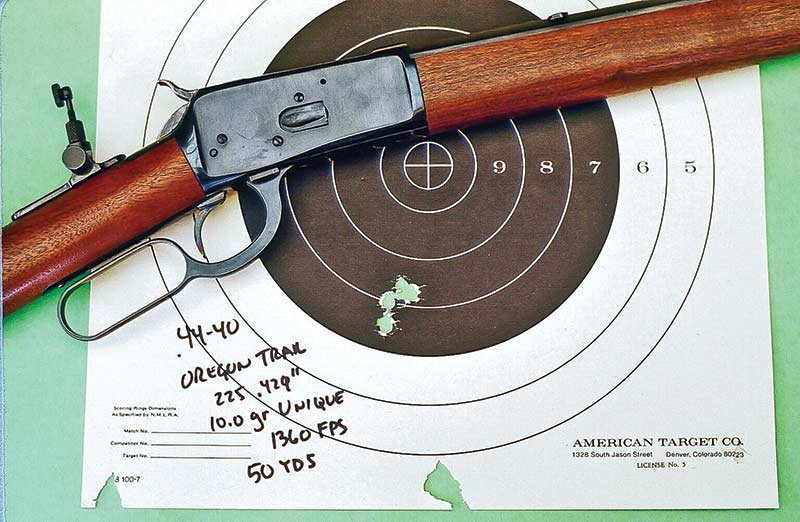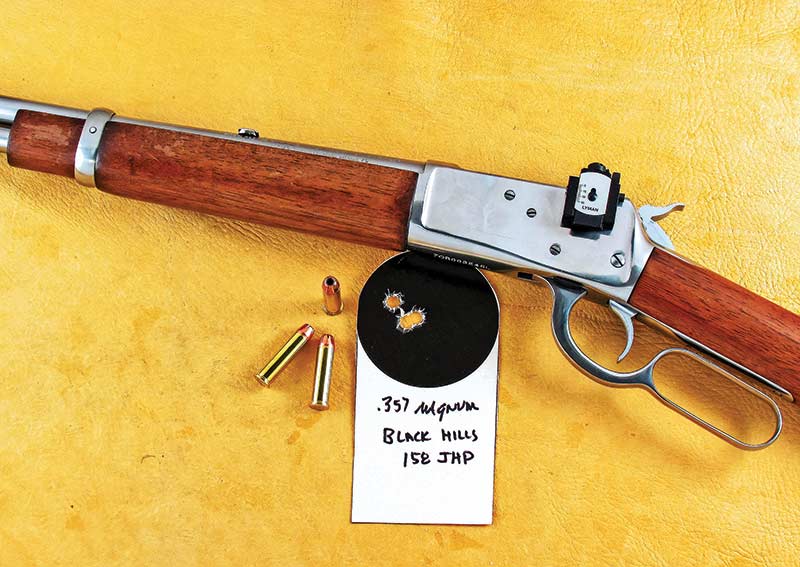Levergun Leverage
Still Hard As It — 160 Years Later!
In 1855, partners Smith & Wesson, Horace and Daniel, formed the Volcanic Repeating Arms Company to improve upon the Rocket Ball lever action design of one Walter Hunt. Both lever action operating carbine and pistol versions were produced. The Rocket Ball ammunition did not provide for a brass case, but rather the powder was contained in the hollowed-out base of the bullet. Previous to this, the shop foreman of the company producing the Jennings Rifle was one B. Tyler Henry.
Horace Smith was hired to improve the Jennings Rifle and the Smith-Jennings Rifle was patented in 1851. By 1854 Smith & Wesson had improved upon the Smith-Jennings and in 1855 were joined by a new investor, one Oliver Winchester. S&W obtained the patent for loading a revolver cylinder from the rear that had been obtained by one Rollin White and using this patent founded the “Smith & Wesson Company.” The result was the first successful cartridge firing revolver, the Smith & Wesson Model #1, a 7-shot, tip-up chambered in what we now know as .22 Short.
Meanwhile Winchester took over the ownership of the Volcanic Arms Company, moving it to New Haven, Conn., hiring B. Tyler Henry as his shop foreman in 1857. Henry went to work experimenting with the old Volcanic lever action mated with the new rimfire cartridge idea, which S&W had come up with and the result, in 1860, was the first successful cartridge firing, repeating rifle — the 1860 Henry. Notice the company was owned by Oliver Winchester, a successful shirt manufacturer, who for whatever reason was not ready to put his name on a repeating rifle. The Henry Rifle used .44 Rimfire ammunition and loaded with an under barrel tube from the front much like many .22 lever action rifles today. It did not have a forearm.
In 1866 using the King’s patent, providing a loading gate in the right side of the receiver, Henry designed the first lever action to be known as a Winchester. It still used the same .44 Rimfire ammunition of the 1860. However, this new model had a forearm and loaded through the gate on the side of the receiver. Both of these rifles had brass/bronze alloy frames and the 1866 became known as the Yellow Boy. Both rifles having the reputation of being loaded on Sunday and shot all week with their magazine capacities of up to 17 rounds.
Improvements
In 1873, the Winchester was further improved by switching to an iron, then steel, receiver and chambered in the first centerfire rifle cartridge, the .44 Winchester Centerfire, known mostly today as the .44-40. Chamberings that followed included the .38 Winchester Centerfire and the .32 Winchester Centerfire, which today are normally referred to as the .38-40 and the .32-20. Versions chambered in .22 Rimfire were also offered. The production of the highly popular 1873 Winchester lasted 50 years, with production ceasing in 1923. All three of these first Winchesters featured a toggle bolt action and to provide added strength, was changed to rear locking lugs in the Winchester Model 1892 (a Browning design). This improved version was offered in the same three Winchester Centerfire cartridges as well as .25-20, and a later version in .218 Bee. The Model 1892 also had a long run, lasting just under 50 years, with production stopping in 1941.
The original leverguns, be they from Winchester or Marlin, were never chambered in the .45 Colt. The major reason is the very small rim on original Colt brass did not allow the extractor to get a good bite. Also, a .45 Colt is a straight walled case and this does not feed as easily through a lever action as the tapered Winchester Centerfire cartridges.
Winchester Closing?
In 1981 Winchester became USRAC, United States Repeating Arms Company, and would go on to produce Winchesters until 2006. The world of leverguns was changed forever when Winchester closed their doors in the early part of this century. During the last quarter of the 20th century, and even into this new century in some cases, either Browning or Winchester or both have provided replicas of the Models 1886, 1892 and 1895 leverguns so there are still plenty of leverguns from those years and current production available.
The 1860 Henry, 1866 Yellow Boy, 1873 Winchester and the 1892 Winchester all are now readily available too in replica form from Italy, Japan or South America. The original .44 Henry Rimfire cartridge of the Model 1860 and Model 1866 is now long gone. However, all of these are chambered in the legendary .44-40. It’s even possible, though not easily so, to find a few .44 Special leverguns. The 1873 and 1892 Models have also been offered in .44 Magnum.
Replicas Are Real Guns
Replica Winchester leverguns today are available from many sources. Some importers that come to mind are Cimarron, EMF, Dixie Gun Works and Taylor’s & Co. with these leverguns being mostly produced by Uberti and Rossi. Very few of us will ever be allowed to even handle, much less shoot a real 1860 Henry. However, thanks to replicas we can all enjoy a true copy of this historic, legendary and extremely important piece of firearms history. The Henry rifle did not have a long history, being in production from 1860 to 1866, with somewhere around 13,000 being produced.
While I am certainly no expert when it comes to original 1860 Henrys, it also certainly seems to me the modern version of the 1860 Henry is true to the original. Anyone who can hold one of these rifles in their hands and not have their soul stirred by the historical significance of such a great firearm is in emotional trouble! There’s something very special about releasing the end of the barrel, allowing it to swivel to the right, dropping cartridges into the magazine, locking the barrel into place, and then shouldering the butt stock. Then sight down the barrel, feel a gentle nudge against the shoulder as a .44 WCF round is fired, operate the lever, and experience that distinctive feeling of the new round being chambered. The 1860, 1866 and the 1873 all chamber differently than subsequent leverguns. It’s done with a smooth feeling no other rifle can duplicate.
The .44 Specials
The .44 Special has been heavy loaded by many experimenters, but these loads are not for the 1866 Winchester — standard pressure loads only need apply. Cimarron’s .44 Special 1866 Carbine has a beautiful brass receiver, curved brass butt plate and a 19″ round barrel. Sights consist of a front blade that is part of the barrel band, while the rear sight is a standard notch with an added flip-up blade allowing the use of two more settings for long-range shooting. With the regular sight in use this .44 Carbine is pretty much on the money.
Even though chambered for the .44 Special, the Yellow Boy will also accept, chamber and fire .44 Colt loads even though the rim diameter is smaller than that found on the .44 Special. Some care must be used in selecting .44 Colt loads however. The 1866 feeds its cartridges straight back onto the lifter, and if the cartridges are too short, it will allow the base of the next cartridge from the magazine to protrude into the action, locking it up.
.44 Magnums
I’ve had one of the early Rossi .44 Magnum leverguns since it first came out and soon added companion M92s in .44-40 .45 Colt and .357 Magnum. Just recently I purchased a stainless steel .357 Magnum 20″ carbine. However, I had it cut back to a much easier handling 16″. With its shorter barrel length and weather beating stainless steel finish plus the addition of a receiver sight, it comes very close to being the lever action equivalent of a Perfect Packin’ Pistol.
The Rossi is a less expensive alternative to the original Model 1892 Winchester, with a retail price about one-third as much as a good used original Winchester 1892, and about half as much as the imported replica 1866 or 1873 leverguns. Sights are the standard elevation adjusting style on the rear mated with a front post fitted into the barrel band.
Alternate Ideas
With the advent of the .357 Magnum from Smith & Wesson in 1935 and .44 Magnum sixguns from Smith & Wesson and Ruger in the 1950s, the demand soon rose for a companion levergun. Several gunsmiths made a comfortable living converting Model 1892 .32-20 Winchesters to .357 Magnum and .44-40s to .44 Magnum. Then in the 1960s both Winchester and Marlin brought forth leverguns in .44 Magnum with Winchester’s being on the tried and true Model 1894.
The Trapper version of the Model 1894, whether chambered in .44 Magnum, .45 Colt, .357 Magnum and even .30-30, has a 16 ½” barrel, full magazine tube and goes well with pick-up trucks and jeeps. The short barrels and compact size makes it imminently more practical than a long-barreled bolt action, especially for the 4×4 riding farmer and rancher.
All Winchester leverguns are now made by the Japanese firm of Miroku. These are excellent examples of the gunmakers art and it could be easily argued they are even better than the originals. The Miroku Model 1892 has been chambered in .357 Magnum, .45 Colt, .38-40, .44-40 and .44 Magnum. In the late 1970s to early 1980s, Browning offered the Model 1892 in both .44 Magnum and .357 Magnum chamberings. These are beautifully made leverguns by Miroku and today demand high collector prices.
Much ado is made these days about pistol-caliber carbines and normally refers to semi-automatic 9mms. However, real pistol caliber carbines are lever actions, with roots going all the way back to the 1860 Henry. My favorite rifles are leverguns — and my favorite leverguns remain Trapper Models.
